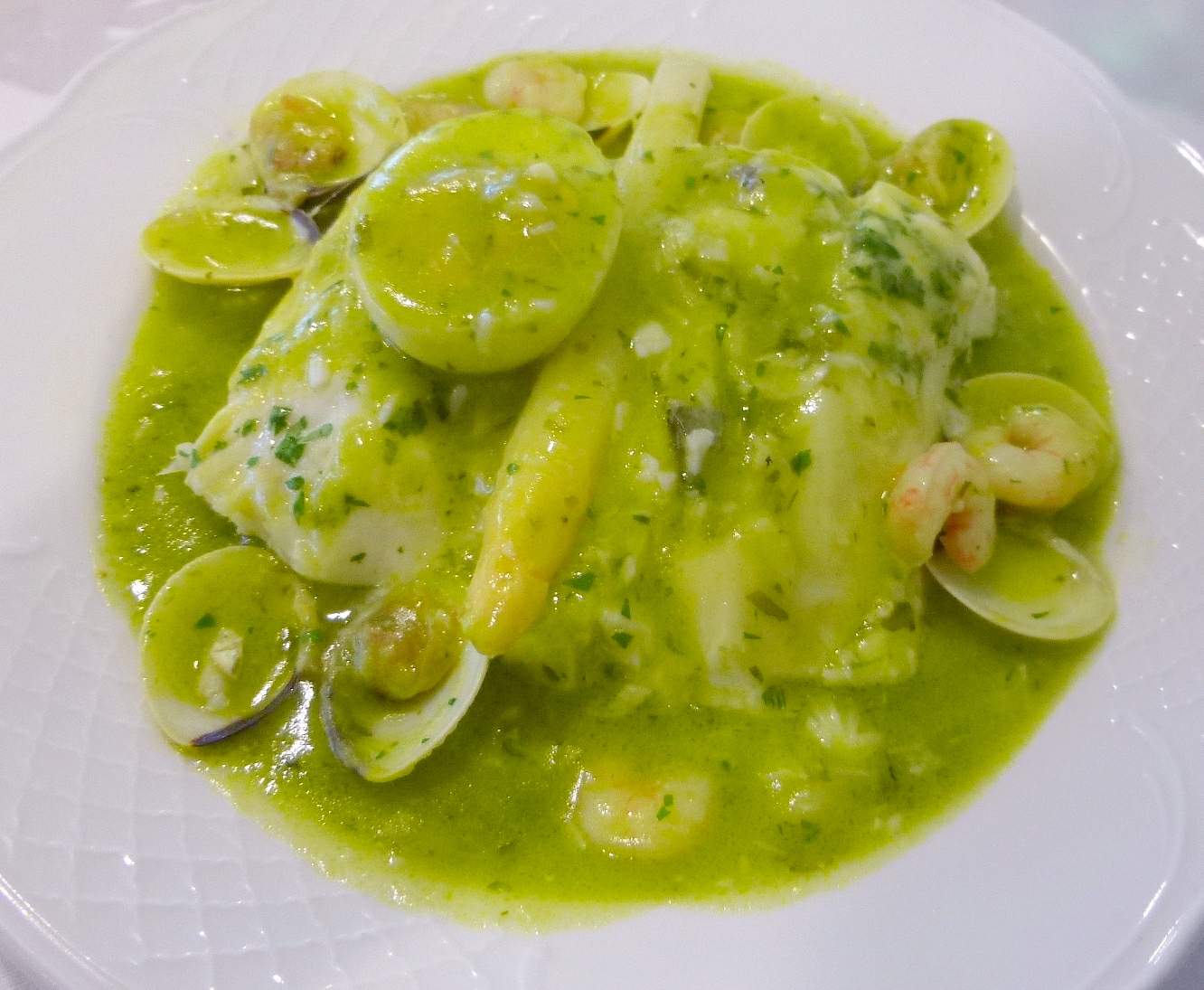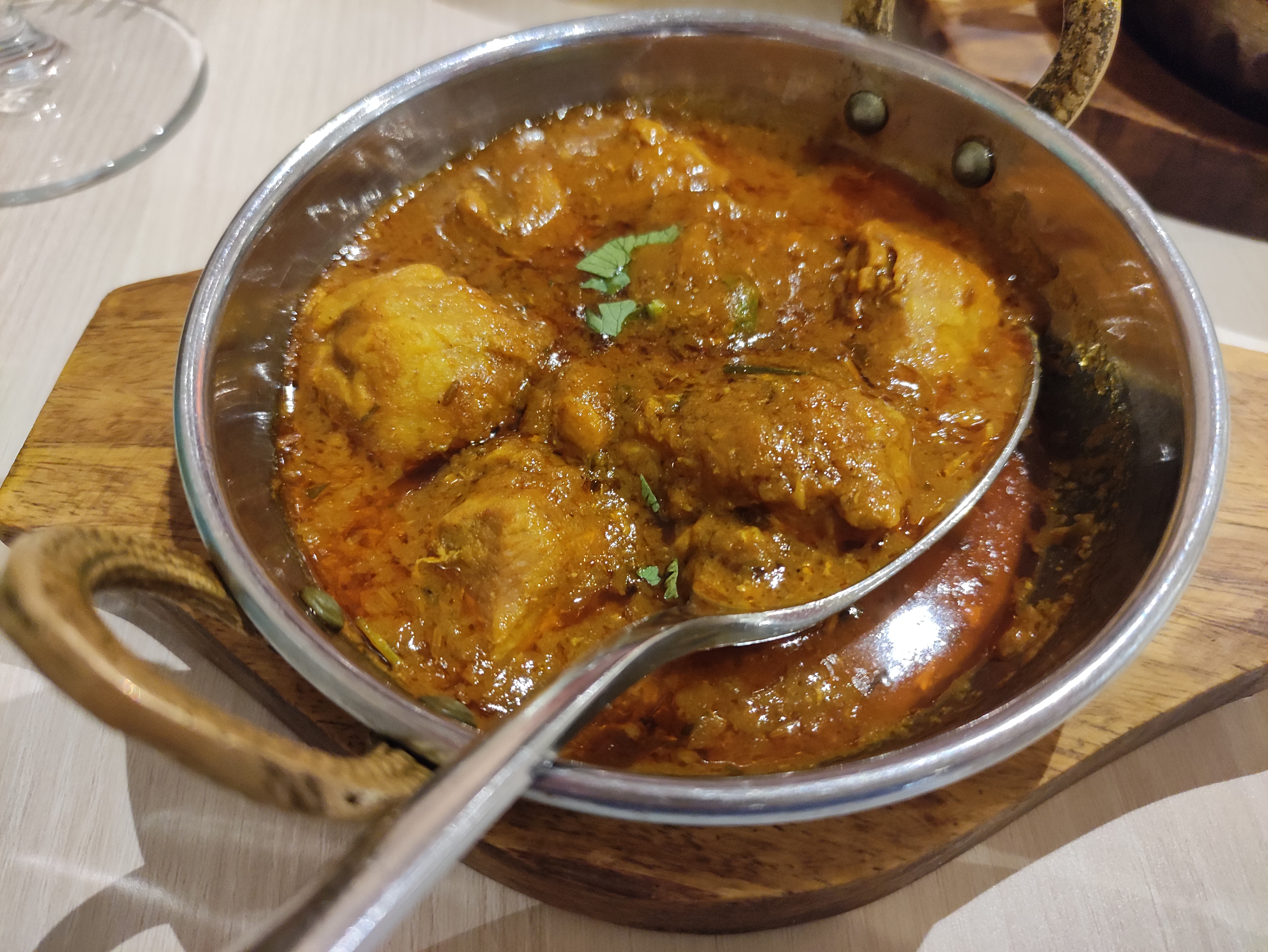|
Chimichurri
() is an uncooked sauce used as an ingredient in cooking and as a table condiment for grilled meat. Found originally in Argentina and used in Argentinian cuisine, Argentinian, Uruguayan cuisine, Uruguayan, Paraguayan cuisine, Paraguayan and Brazilian cuisine, Brazilian cuisines, it has become widely adopted in most of Latin America. Joyce GoldsteinThe mysterious origins of chimichurri ''San Francisco Chronicle'' (October 5, 2012). The sauce comes in green sauce, green () and red () varieties. It is made of finely chopped flat-leaf parsley, chili peppers, minced garlic, olive oil, oregano, and red wine vinegar or lemon juice. It is similar to Moroccan chermoula. Etymology The name may be a variant of Spanish 'hubbub', ultimately perhaps from Basque language, Basque 'noise, rumor'. Another theory connects it to Basque 'hodgepodge', 'mixture of several things in no particular order'; many Basques settled in Argentina and Uruguay in the 19th century. Various False etymology, ... [...More Info...] [...Related Items...] OR: [Wikipedia] [Google] [Baidu] |
Uruguayan Cuisine
Uruguayan cuisine is a fusion of cuisines from several European countries, especially of Mediterranean foods from Spain, Italy, Portugal and France. Other influences on the cuisine resulted from immigration from countries such as Germany and Scotland. Uruguayan gastronomy is a result of immigration, rather than local Amerindian cuisine, because of late-19th and early 20th century immigration waves of, mostly, Italians. Spanish influences are abundant: desserts like churros (cylinders of pastry, usually fried, sometimes filled with dulce de leche), Crème caramel, flan, Ensaïmada, ''ensaimadas'' yoo (Catalan sweet bread), and alfajores were all brought from Spain. There are also various kinds of stews known as Stew, guisos or estofados, arroces (rice dishes such as paella), and fabada (Asturias, Asturian bean stew). All of the guisos and traditional ''pucheros'' (stews) are also of Spanish origin. Uruguayan preparations of fish, such as Dried and salted cod, dried salt cod (Bacal ... [...More Info...] [...Related Items...] OR: [Wikipedia] [Google] [Baidu] |
Argentinian Cuisine
Argentine cuisine is described as a blending of cultures, from the Indigenous peoples of Argentina who focused on ingredients such as humita, potatoes, cassava, peppers, tomatoes, beans, and yerba mate, to Mediterranean influences brought by the Spanish during the colonial period. This was complemented by the significant influx of Italian and Spanish immigrants to Argentina during the 19th and 20th centuries, who incorporated plenty of their food customs and dishes such as pizzas, pasta and Spanish tortillas. Beef is a main part of the Argentine diet due to its vast production in the country's plains. In fact, Argentine annual consumption of beef has averaged per capita, approaching per capita during the 19th century; consumption averaged in 2007. Beyond ''asado'' (the Argentine barbecue), no other dish more genuinely matches the national identity. Nevertheless, the country's vast area, and its cultural diversity, have led to a local cuisine of various dishes. The gre ... [...More Info...] [...Related Items...] OR: [Wikipedia] [Google] [Baidu] |
Chermoula
Chermoula (Berber: ''tacermult'' or ''tacermilt'', ) or charmoula is a marinade and relish used in Algerian, Libyan, Moroccan and Tunisian cooking. It is traditionally used to flavor fish or seafood, but it can be used on other meats or vegetables. It is somewhat similar to the Latin American chimichurri. Ingredients Common ingredients include garlic, cumin, coriander, oil, lemon juice, and salt. Regional variations may also include preserved lemons, onion, ground chili peppers, black pepper, saffron, and other herbs. Varieties Chermoula recipes vary widely by region. In Sfax, Tunisia, chermoula is often served with cured salted fish during Eid al-Fitr. This regional variety is composed of dried dark raisin purée mixed with onions cooked in olive oil and spices such as cloves, cumin, chili, black pepper, and cinnamon. A Moroccan version comprises dried parsley, cumin, paprika, and salt and pepper. The Libyan version of charmoula is served as a side dish in the summer; It cont ... [...More Info...] [...Related Items...] OR: [Wikipedia] [Google] [Baidu] |
Green Sauce
Green sauce or greensauce is a family of cold, uncooked sauces based on chopped herbs, including the Spanish and Italian ''salsa verde'', the French , the German or (Frankfurt dialect), the British mint sauce and greensauce, and the Argentinian ''chimichurri''. The Mexican '' salsa verde'', though also called a "green sauce", is instead based on tomatillos and is commonly cooked; the New Mexico version uses a green chile base. History Green sauce has a long history in many parts of Europe. It was certainly present in the Middle Ages, and may date to the Classical period. Green sauce made with parsley and often sage was one of the most common sauces of medieval cookery. In a 14th-century recipe, green sauce served with a dish of cheese and whole egg yolks boiled in watered down wine with herbs and spices was recommended for "lords, for settling their temperament and whetting their appetite". The basic recipe is probably from the Near East and, as such, is probably ... [...More Info...] [...Related Items...] OR: [Wikipedia] [Google] [Baidu] |
Sauce
In cooking, a sauce is a liquid, cream, or semi- solid food, served on or used in preparing other foods. Most sauces are not normally consumed by themselves; they add flavour, texture, and visual appeal to a dish. ''Sauce'' is a French word probably from the post-classical Latin ''salsa'', derived from the classical ''salsus'' 'salted'. Possibly the oldest recorded European sauce is garum, the fish sauce used by the Ancient Romans, while doubanjiang, the Chinese soy bean paste is mentioned in '' Rites of Zhou'' 20. Sauces need a liquid component. Sauces are an essential element in cuisines all over the world. Sauces may be used for sweet or savory dishes. They may be prepared and served cold, like mayonnaise, prepared cold but served lukewarm like pesto, cooked and served warm like bechamel or cooked and served cold like apple sauce. They may be freshly prepared by the cook, especially in restaurants, but today many sauces are sold premade and packaged like Worce ... [...More Info...] [...Related Items...] OR: [Wikipedia] [Google] [Baidu] |
Wasakaka
Wasakaka is a savory sauce found in Dominican and Venezuelan cuisine. The name is also spelled ''guasacaca'', pronounced the same. It is often used in chicken dishes. Variations Venezuela In Venezuela the sauce is made from avocados, olive oil, salt, pepper, lime juice or vinegar, cilantro, parsley, green bell peppers, onions, worcestershire sauce, garlic, and chili peppers. The Venezuelan sauce is similar to Mexican guacamole. It is served over ''parrillas'' (grilled food), ''arepas'', ''empanadas'', and various other dishes. It is common to make the ''guasacaca'' with a little hot sauce instead of ''jalapeño'', but like a guacamole, it is not usually served as a hot sauce itself. Dominican Republic In the Dominican Republic the sauce is made with lime or sour orange juice, garlic, parsley, salt, pepper and olive oil. It is similar to Canary Islands mojo, which was brought to the Caribbean and is very popular in Cuba and Puerto Rico. The sauce in Dominican Republic is b ... [...More Info...] [...Related Items...] OR: [Wikipedia] [Google] [Baidu] |
Basque Language
Basque ( ; ) is a language spoken by Basques and other residents of the Basque Country (greater region), Basque Country, a region that straddles the westernmost Pyrenees in adjacent parts of northern Spain and southwestern France. Basque is classified as a language isolate (unrelated to any other known languages), the only one in Europe. The Basques are indigenous to and primarily inhabit the Basque Country. The Basque language is spoken by 806,000 Basques in all territories. Of them, 93.7% (756,000) are in the Spanish area of the Basque Country and the remaining 6.3% (50,000) are in the French portion. Native speakers live in a contiguous area that includes parts of four Spanish provinces and the French Basque Country, three "ancient provinces" in France. Gipuzkoa, most of Biscay, a few municipalities on the northern border of Álava and the northern area of Navarre formed the core of the remaining Basque-speaking area before measures were introduced in the 1980s to stre ... [...More Info...] [...Related Items...] OR: [Wikipedia] [Google] [Baidu] |
Merriam-Webster
Merriam-Webster, Incorporated is an list of companies of the United States by state, American company that publishes reference work, reference books and is mostly known for Webster's Dictionary, its dictionaries. It is the oldest dictionary publisher in the United States. In 1831, George Merriam, George and Charles Merriam founded the company as G & C Merriam Co. in Springfield, Massachusetts. In 1843, after Noah Webster died, the company bought the rights to ''Webster's Dictionary#Noah Webster's American Dictionary of the English Language, An American Dictionary of the English Language'' from Webster's estate. All Merriam-Webster dictionaries trace their lineage to this source. In 1964, Encyclopædia Britannica, Inc., acquired Merriam-Webster, Inc., as a subsidiary. The company adopted its current name, Merriam-Webster, Incorporated, in 1982. History 19th century In 1806, Webster published his first dictionary, s:A Compendious Dictionary of the English Language, ''A Compen ... [...More Info...] [...Related Items...] OR: [Wikipedia] [Google] [Baidu] |
Argentina
Argentina, officially the Argentine Republic, is a country in the southern half of South America. It covers an area of , making it the List of South American countries by area, second-largest country in South America after Brazil, the fourth-largest country in the Americas, and the List of countries and dependencies by area, eighth-largest country in the world. Argentina shares the bulk of the Southern Cone with Chile to the west, and is also bordered by Bolivia and Paraguay to the north, Brazil to the northeast, Uruguay and the South Atlantic Ocean to the east, and the Drake Passage to the south. Argentina is a Federation, federal state subdivided into twenty-three Provinces of Argentina, provinces, and one autonomous city, which is the federal capital and List of cities in Argentina by population, largest city of the nation, Buenos Aires. The provinces and the capital have their own constitutions, but exist under a Federalism, federal system. Argentina claims sovereignty ov ... [...More Info...] [...Related Items...] OR: [Wikipedia] [Google] [Baidu] |
False Etymology
A false etymology (fake etymology or pseudo-etymology) is a false theory about the origin or derivation of a specific word or phrase. When a false etymology becomes a popular belief in a cultural/linguistic community, it is a folk etymology (or popular etymology). Nevertheless, folk/popular etymology may also refer to the process by which a word or phrase is changed because of a popular false etymology. To disambiguate the usage of the term "folk/popular etymology", Ghil'ad Zuckermann proposes a clear-cut distinction between the derivational-only popular etymology (DOPE) and the generative popular etymology (GPE): the DOPE refers to a popular false etymology involving no neologization, and the GPE refers to neologization generated by a popular false etymology. Such etymologies often have the feel of urban legends and can be more colorful and fanciful than the typical etymologies found in dictionaries, often involving stories of unusual practices in particular subcultures (e.g ... [...More Info...] [...Related Items...] OR: [Wikipedia] [Google] [Baidu] |
Curry
Curry is a dish with a sauce or gravy seasoned with spices, mainly derived from the interchange of Indian cuisine with European taste in food, starting with the Portuguese, followed by the Dutch and British, and then thoroughly internationalised. Many dishes that would be described as curries in English are found in the native cuisines of countries in Southeast Asia and East Asia. The English word is derived indirectly from some combination of Dravidian words. A first step in the creation of curry was the arrival in India of spicy hot chili peppers, along with other ingredients such as tomatoes and potatoes, part of the Columbian exchange of plants between the Old World and the New World. During the British Raj, Anglo-Indian cuisine developed, leading to Hannah Glasse's 18th century recipe for "currey the India way" in England. Curry was then spread in the 19th century by indentured Indian sugar workers to the Caribbean, and by British traders to Japan. Further exchange ... [...More Info...] [...Related Items...] OR: [Wikipedia] [Google] [Baidu] |






